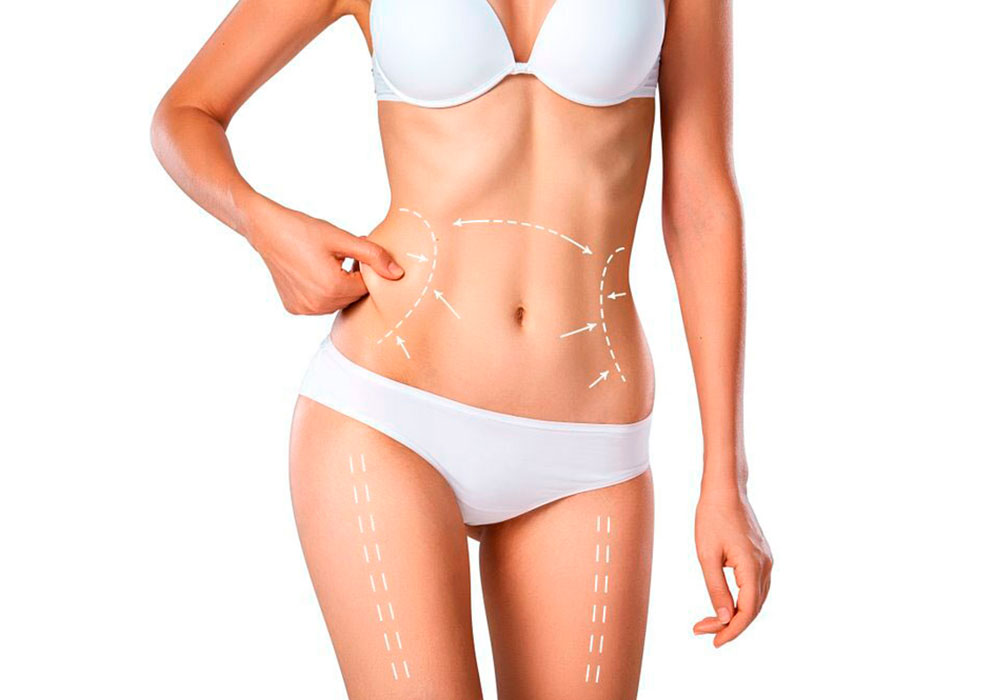
Abdominal lipectomy is a surgical intervention that consists of detaching and resecting the skin and fat of the abdomen through an incision in the suprapubic fold (above the pubis), which allows the scar to be perfectly concealed by underwear or swimsuits . Abdominoplasty also allows the repair of the muscular wall in order to achieve a flat abdomen and, in indicated cases, the narrowing of the patient’s waist. The extent of the incision will depend on the sagging of the skin and the degree of obesity of the person.
The entire tummy tuck procedure takes approximately 2-3 hours depending on the complexity. Once the surgery is finished, the patient will wear a drainage system for 24 or 48 hours depending on the case. The stitches are removed after 2 weeks.
- +GENERAL RECOMMENDATIONS. PREPARATION
- Do not eat food 8 hours before surgery
- Do not take Aspirin or Ibuprofen for 5 days prior to surgery.
- If you are taking blood thinners, stop three days before surgery.
- +GO TO THE CLINIC INDICATED BY THE DOCTOR UNDER THE FOLLOWING CONDITIONS
- After the morning bath, do not apply any cream or makeup.
- Remove nail polish if you have it
- Put on comfortable clothes if possible a sweatshirt with zippers on the front, wool socks.
- Do not wear jewelry of any kind
- Introduce yourself with a companion.
- The admission of children to the IPS is not allowed (their health conditions can be affected in places where different pathologies are managed)
- Prepare the bed that you are going to use in the postoperative period by placing a plastic that covers it in its entirety on top of a mattress, use old sheets this because in the postoperative period it will drain abundant fluids (water – blood)
- +TAKE WITH YOU
- The girdle that you have previously purchased for the post-operative period.
- A pack of maternal sanitary napkins
- A pair of anti-embolic stockings.
- +AFTER SURGERY
- It is recommended that the patient stay in the clinic for the first 24 hours (additional cost)
- It is recommended that the patient go home the next day by ambulance (additional cost)
- Rest, semi-sitting position and elevated lower limbs.
- Take analgesics and antibiotics as prescribed by a doctor.
- The day after the intervention, the patient should do a slow and short walk of 15 minutes in the morning and 15 in the afternoon, it is recommended that the patient remain more seated than lying down. During the march, the breathing should be with slow inhalations and expirations (Take the air very soft and exhale it slowly). The gait position will be tilted with the head raised if this condition is not met, there will be the risk that the wound will open or necrose
- When removing the girdle for the bath or to wash it for the first time, the patient will possibly feel a slight decompensation that should be handled calmly by the family, this is due to a slight hypotension with hypothermia, it is advisable at this time to sit it down and give it a hot drink with sugar.
- For the first body bath it is recommended to place a plastic chair in the shower (be very careful with the drain, so you do not accidentally pull it).
- The use of liquid soap is recommended to wash the areas around the wound and the wound itself remember that you should not pass your hands over other areas of your body before handling the wounds, this would cause the risk of possible infections.
- The patient’s diet should be rich in iron and protein, avoiding flours (it is ideal for the patient to eat meats such as liver, bird, blood sausage, fish, and chicken).
- The patient must permanently wear the girdle (day and night), at least for three months and the anti-embolic stockings until the doctor indicates.
- Remember that good post-operative management depends on you and if you follow the instructions given, the result of your surgery will be optimal.
- Request your appointment when leaving the clinic for the beginning of your post-operative massages
- Show up for your first check-up at 8 days, depending on the type of suture, stitches will be removed after 15 – 20 days, if necessary.
- Request the Cellular or Landline Number of the specialist doctor in case you have any warning signs of those described in this format.
- One of our officials will be contacting you by phone to verify her health.
- Avoid the presence of pets during your post-operative period, since hair and feces can cause complications in your surgery.
- +ALARM SIGNS
- Wound Opening.
- Heavy bleeding
- Fever.
- Respiratory Difficulty.
- Intense pain.
- Darkening and / or redness of the skin
- Irritation or itching.

